|
Practice tee improvements...
John Slade, Laurel Creek Country Club, Mount Laurel, NJ:
 "Since last year, major improvements have taken place to the practice facility. Mats were installed last fall at the rear of the upper practice tee, allowing use of the range under most any weather conditions. Over the winter, the lower practice tee surface was stripped, drainage was installed, it was re-graded, and re-sodded. The new hitting surface is a cold-tolerant variety of Bermudagrass with the feel of bentgrass.
"Its growth is so aggressive that no seed is needed for the divoted areas to fill in..." |
This type of turf is now being used at several courses in the Philadelphia area such as Philadelphia and Huntingdon Valley Country Clubs, as well as providing the playing surface for Citizens Bank Park, Lincoln Financial Field and the Philadelphia Union's PPL Park.
With extreme weather conditions during the past couple of summers, this turf will be perfect since it will thrive during the heat, when the cool season grasses are slow to recover. Its growth is so aggressive that no seed is needed for the divoted areas to fill in."
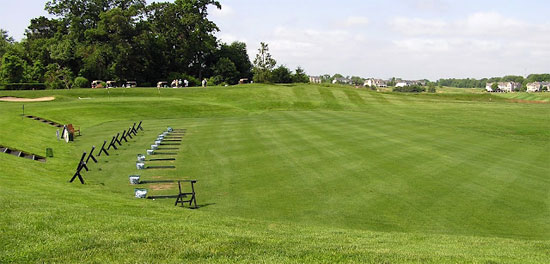
Visit John's blog at laurelcreeksuper.blogspot.com.
|
 |
|
Technology and Turf-Moisture Management
Garrett Luck, North Shore Country Club, Mequon, WI:
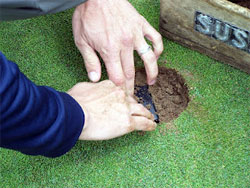  "In today's climate of heightened environmental sensitivity, most everyone is aware of the need to preserve the earth's natural resources. An increase in the global population has brought this issue to the forefront of today's environmental issues.
Professional turf managers most certainly understand this, but also understand the benefits derived from proper moisture management. Conditions that allow for a proper balance of irrigation over time provide healthy turf and improved playability. Excessive moisture creates an ideal environment for disease development and root loss due to a lack of oxygen in the root zone. Unnecessary water also leads to undesirable playing conditions such as plugged lies and reduced ball roll.
Successful golf course superintendents realize the importance of proper moisture management and will currently employ advances in technology to best manage irrigation at their courses.The golf course maintenance staff currently at NSCC currently uses two pieces of technology to monitor soil moisture conditions on the golf course.
 Last year, the golf course maintenance staff began using the FieldScout TDR 300 Soil Moisture Meter. This portable meter is carried from green to green by a trained staff member. During the summer month's data is gathered throughout the day. The numbers obtained from the unit are checked against threshold numbers that have been previously established. The threshold numbers identify the minimum water requirement for healthy turf. If the turf falls below the threshold number, nightly irrigation or hand water will be scheduled.
This year, the golf course maintenance staff will begin using a product called Turf Guard which is manufactured by the Toro Company. Turf Guard is a system of soil moisture meters that communicate with the central irrigation computer. Last week, NSCC staff installed these stationary meters in the greens on 1 White and 7 White, along with the fairway on 1 White. The sensors communicate via radio to receiver in the clubhouse. The receiver then sends information over the internet to the central computer in the Superintendent's office in the maintenance facility.
 The sensors monitor both soil temperature and moisture. Accurate soil temperature measurements are critical when applying time sensitive herbicide, fungicide, and fertilizer applications. Additionally, the sensors may be left out during the winter to monitor soil temperatures below snow cover. As previously discussed, proper soil moisture management is critical for both healthy turf and improved course playability. These meters provide real-time measurements that are accessible at any time from the central computer at NSCC, as well as remotely from my iPhone and iPad. If the Turf Guard sensors prove valuable, we will have the opportunity to expand to other locations through the golf course in the future."
Visit Garrett's blog at http://nsccgcm.blogspot.com
|
 |
|
Passing of Cinnabar's Architect, John Harbottle III...
Brian Boyer, Cinnabar Hills Golf Club, San Jose, CA:
  On May 24, 2012, the incredibly talented golf course architect of Cinnabar Hills Golf Club and so many other wonderful golf courses in the United States and around the world, John Harbottle III, unexpectedly passed away. He was 53.
In 1995 and after extensive consideration of many, John was tapped to be the architect for our course. To much acclaim, Cinnabar Hills opened in August 1998. John was selected for the job because of his tremendous talent, work ethic and background of work. Moreover, John was selected because of who he, the man, was as a human being. While extremely well skilled in his craft, John's personal character, integrity and 'family man' nature made him a natural fit with the Cinnabar Hills ownership group. "Working with John to create Cinnabar Hills was, indeed, a joy; we called him 'Gazelle' due to his long legs and enjoyment of walking the land..." |
Working with John to create Cinnabar Hills was, indeed, a joy; we called him 'Gazelle' due to his long legs and enjoyment of walking the land.
We intended Cinnabar Hills to serve as a lasting legacy to our community, and John led and helped us accomplish our goal. It is with great sadness that we extend our deepest sympathy to John's wife Teresa and children Johnny and Chelsea during this most difficult time.
Below are just part of John's lasting legacy at Cinnabar Hills Golf Club."

Cinnabar Hills - Lake 5
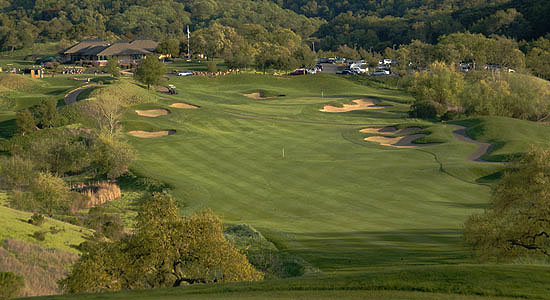
Cinnabar Hills - Lake 9

Cinnabar Hills - Mountain 3
Visit Brian's blog at cinnabarhills.blogspot.com.
|
 |
|
The Evolution of Lower 2...
Jim Sedrel, assistant superintendent, Wakonda Club, Des Moines, IA:
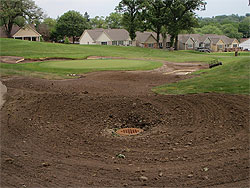  "We have been making big improvements to the Lower #2 green complex over the past few weeks. This area has been plagued in the past from poor drainage and washed out bunkers. Our first goal for this project was to replace the drainage around the green and in the bunkers. We also installed berms to catch and redirect runoff during heavy rains. Finally, we refurbished the bunkers so that they will be less severely damaged by heavy rains.
The photo above right is the first of two berms which will catch runoff and direct the excess water into the drain.
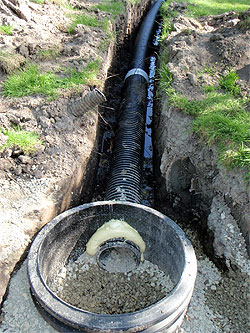
The catch basins are 30" in diameter. We used a 10" pipe to carry away the water.
|
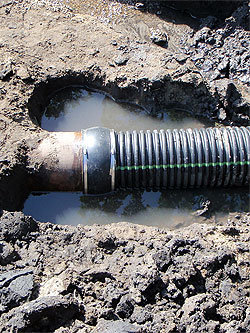
We tied the basin drains into an old tile line that was intact and still functioning well. Stamped on the pipe was a month and year: 'October 1918'. |
We utilized larger than normal pipe in the bunkers (6 inch rather than the customary 4 inch.) We are also utilizing technology often found in septic leach fields. We installed 75 feet of leach field chamber domes. These domes are 12 inches tall and 18 inches wide and will store a significant volume of water beneath the sand during heavy rains when drain pipes become overwhelmed.
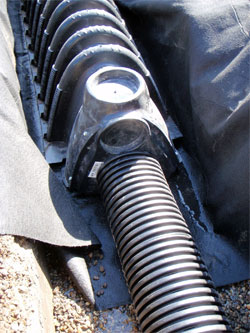
A section of 6" perforated drain pipe connected to the leach field chamber.
|
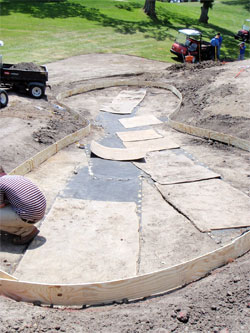
We are forming the bunkers with plywood which will be removed once the sand is installed and sod has rooted down. |
We have been blessed by dry weather throughout the project but received a half inch of rain last night. We will wait for the area to dry out and begin the finishing touches following the Memorial Day holiday.
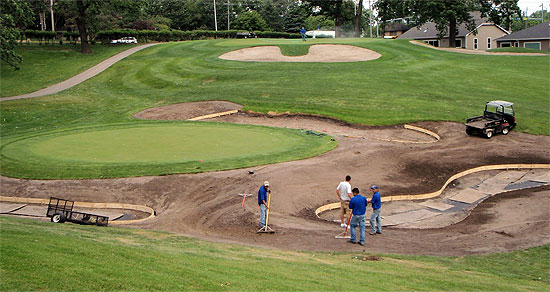
Nearly ready for sand and sod!
Visit the Wakonda Grounds blog at wakondagrounds.blogspot.com.
|
 |
|
How much water? and, why a picture of my pants?
Chris Tritabaugh, Northland Country Club, Duluth, MN:
 "Saturday through Thursday night the golf course received 4.5" of rain. After a heavy period of rain like this I am often asked some form of the question; 'how much is too much?' Here is a little perspective on how much water fell on the course over the past five days and whether it is overkill or not.
One acre-inch of water, the amount needed to cover an acre of ground with an inch of water, equals 27,154 gallons. We irrigate tees, fairways and greens plus any rough covered by the irrigation head's throw. The golf course sits on 160 acres of land, let's say we irrigate 100 of those acres. Prepare yourself, these numbers are staggering.
"Ponder those numbers a little while; when you do, you realize why irrigation can never duplicate a rain event for effectiveness in watering a golf course..." |
Total rainwater to fall on the 160 acres of the golf course Saturday through Thursday = 19,550,880 gallons.
In the past three seasons the total irrigation amounts for tees, fairways and greens has averaged 8,000,000 gallons for the entire golf season.
Ponder those numbers a little while; when you do, you realize why irrigation can never duplicate a rain event for effectiveness in watering a golf course. It also goes to show how much or rather how little water it actually requires to maintain a healthy golf course.
So to answer the question: 4.5" of rain is overkill for a golf course. However, I do not speak on behalf of the lakes and streams. Nonetheless we will take the moisture when we can get it.
 Now, why a picture of my pants? After 4.5 of rain this past week, I just played 18 holes and they are clean and dry. Think our practices are working? I would say so."
Visit Chris's blog at northlandgrounds.blogspot.com
|
 |
|
Dawns First Light on Glen Echo and Memorial Day...
Joe Wachter, CGCS, Glen Echo Country Club, St. Louis, MO:
 "Hope you have had a chance to be at the club this weekend. Members, guests and some good lady players from all over the country have been challenged by some great conditions.
The ladies are here for a US Women's Open qualifying tournament on Tuesday."
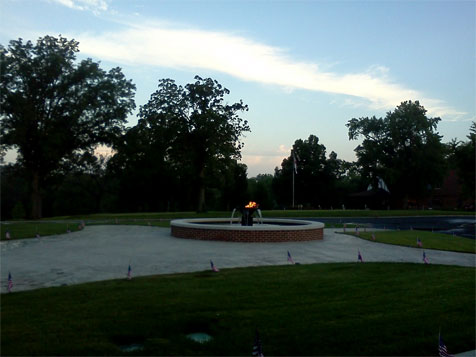
Visit Joe's blog at geccgcm.blogspot.com.
|
 |
|
Eucalyptus hair...
Jim Alwine, Stockton Golf & Country Club, Stockton, CA:
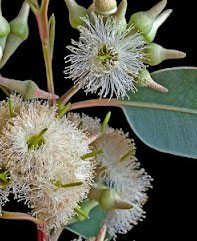  "This year's Invitational had one interesting problem to deal with. After the crew detailed the course to tournament conditions, heavy winds arrived and made quite a mess. Friday's first round's 9:00 am shotgun had us starting at 4:00 am to mow, double roll, and blow, blow, blow.
Three greens downwind of our massive and messy eucalyptus trees were covered in the flower parts that are tipped with tiny yellow anthers. Here is a excellent photo pulled from Microscopy UK and author Brian Johnston. The little white hairs covered three greens and slowed ball roll down making greens that were stimping 11.5 feet only roll out at 9.5. That is not very fair to the contestants.
We tried to blow them off, but they were glued to the surface. We tried to mow them off, and no luck at all. We then tried to wash them off with a high pressure nozzle and the greens were going to be soaked by the time we finished. As you can see below, the results were not that great.
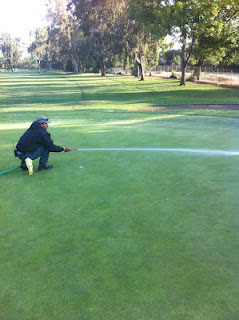 |
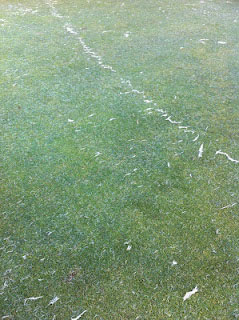 |
Back to the drawing board and back to the shop to get our Greens Groomer brush. I spun the greens a couple of times, we mowed again and double rolled. Finally back up to speed and ready for play."
I'll have a couple more posts about the Invitational which was a very positive experience for members, guests, and the staff. I'm glad it's over with, but I enjoyed every minute. Thank you to my wonderful crew, the best around!!!"
Visit Jim's blog at sgccturf.blogspot.com.
|
 |
|
About our Blog Aggregator: Many superintendents are now hosting private blogs to better communicate with their golfers and/or members. Beyond local weather and course conditions, there is a great deal of information about projects, methodologies and techniques that would be of value to other superintendents — hence our Turf Blog Aggregator. As every blogger struggles occasionally with content, we also include posts intended to educate golfers about turf maintenance for others to use as a template for their own blogs.
Miss any previous issues of TBA? You can find them all here.
Turf Blog Aggregator(TM) is a trademark of Turnstile Media Group.
|
|